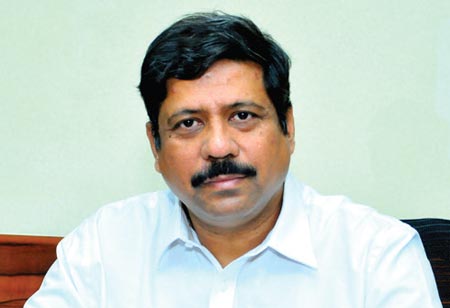 Magazine
Magazine

The In India, the packaging industry is a mix of both small- and medium-sized players. In the coming years, domestic demand for packaging will rise rapidly. FMCG companies are extensively using sustainable packaging technologies to reduce packaging costs and take measures for the recycling of the packaging materials, which protect the environment.
India is the second-largest food producer and one of the biggest consumers of packaged food and drinks. Increased customer awareness and the increase in the processed food and beverage industry are important factors in changing from unpackaged sales to packaged sales. Overall, brand owners recognise the need for advanced solutions in packaging at low costs. Other factors, such as the exposure to new and improved packaging methods, easing of import standards of food and beverages, the addition of modern retail outlets and changing consumer preferences, are also important.
Glass packaging is a major segment of packaging. It faces fierce competition from other types of packaging in India. India’s global vision is that plastics will be replaced by green and environmentally sound products, which motivate the country to invest in glass. Although the key market drivers are glass bottles or containers in this region, growth has also encouraged the adoption of other forms, including syringe and ampoules, in the Indian healthcare and pharmaceuticals sector.
Market Watch
The Indian demand for consumer products is projected at INR1.170 billion between 20 and 21, at an annual growth rate of 11.3 per cent. Consumer packaging is ahead of the bulk packaging business within the industry, with a market share of 54 per cent. ” In the past year, the packaging industry saw a modest rise, with industrial growth slowing and the demand for consumers falling. In the next 12 months, however, the growth prospects are promising. India's low per capita consumption of packaging in comparison with developed economies, the growing availability of income, growth in end-users -specially packaged food - and a shift to organised markets are key growth factors.
New investment prospects are also good, as most businesses plan to invest in new facilities to meet the demand. Packaging companies expect to concentrate on driving sales and profitability by focusing on exports, improving customer support and improving production efficiency.
Emerging Trends In The Packaging Industry
A significant transition has begun with a highly dynamic combination of marketing and trading tactics in consumers, broad retail groups and the food services industry. Over the years, numerous methods have been created for food packaging technology. Some new concepts in the market include active packaging, smart packaging and nanotechnology.
1. Active Packaging: It is an innovative packaging technology that incorporates certain additives into containers through which the packaging, product and environment interact to prolong the shelf-life or t improve the safety or sensory characteristics of the food product to maintain its quality.
2. Intelligent Packaging: This type of packaging can perform intelligent functions (sensing, detecting, tracing, recording and communicating) to promote decision making to prolong the shelf life, increase efficiency, improve protection and provide information and warning against potential problems.
The Indian demand for consumer products is projected at INR1.170 billion between 20 and 21, at an annual growth rate of 11.3 per cent
3. Eco-Friendly Packaging: There should be no environmental challenges and enough recycling opportunities for the perfect packaging material. Ecolabel packaging can play a central role in avoiding food waste to protect human health, the atmosphere and conserve natural resources. Green packaging materials possess certain important characteristics, such as reduction, recycling, renovation and repurposing.
4. Flexible Packaging: This category includes custom-made film, foil and laminate paper for the primary packaging of solid, liquid or powder goods in consumer-size packs. The changes have been rapid, with new features, from paper to cellophane plastic wraps to aluminium foils and metallic foils, incorporated into the packing material to add value for the consumers. Technological advances have contributed to the spread of metallic films (laminate and coextrusion-based) packaging, combining the advantages of both plastics and metals.
5. Sustainable Packaging: Sustainable packaging must decrease material use without compromising on quality, safety and reuse of packaging. FMCG companies are using sustainable packaging technologies to reduce packaging costs and take measures to recycle of the packaging materials, which protect the environment.
Current Trends In The Packaging Industry
Consider some of the most important product trends to emerge in the global packaging industry. Likely “top twelve” include the following:
• Flexible packaging
• Metal packaging
• Glass packaging for beverages
• Tetrapacks for dairy and juice products
• Aseptic packaging
• Use of recyclable packaging material
• Vacuum packaging
• Modified atmosphere packaging
• Aerosol packaging
• Skin packaging
• Shrink and stretch packaging
• Tamper-proof packaging
Current Technology In The Packaging Industry For Manufacturing The Following Segments
• Speciality film and laminates
• Multi-layer films
• Multi-layer blow-moulded containers
• Injection-moulded containers
• Roto-moulded containers
• Bulk containers
• Thin-wall glass containers
• Thin-wall metal containers
• Two-piece metal containers
• Aluminium containers
Future Outlook
In the coming years, domestic demand for packaging will rise rapidly. More scientific and practical packaging needs to be adopted in the industry. It will be aligned with the Make-in-India programme in India.
We use cookies to ensure you get the best experience on our website. Read more...